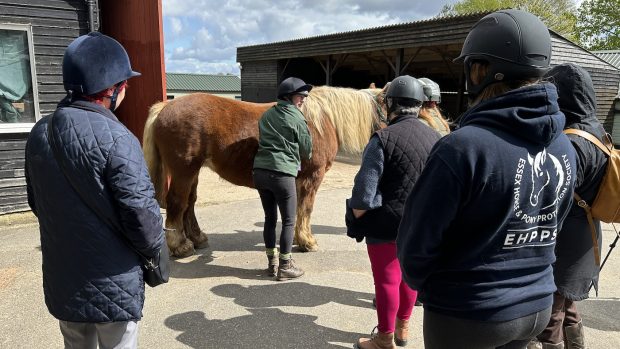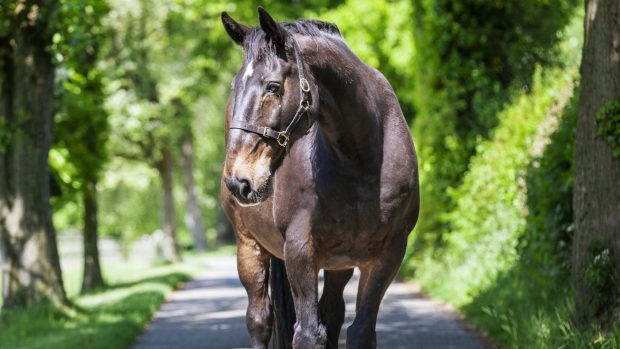A rider whose horse was tragically “swallowed up” by a hidden slurry pit on a bridleway is calling for landowners and councils to take better care of rights of way and for riders using bridleways to be vigilant.
The accident happened when Sue Tonks and her sister, Tracy Marland, were hacking on a popular Warwickshire bridleway near Shewley. Tracy was riding Gorby, a 16.2hh middleweight thoroughbred, who belonged to Sue.
“After crossing fields we entered a single-track bridleway, where you have no choice but to turn your horse around 180° to close the gate,” says Sue. “Gorby trod on a corner of a slab of concrete with his nearside front foot. The concrete gave way and, while struggling to regain his footing, his offside front foot, neck and head disappeared into what looked like a ditch full of water.”
The hole made by the broken concrete was only 2.6ftx4ft, but a 6ft-deep slurry pit was underneath the remaining concrete.
Despite the sisters’ attempts to pull the horse’s front end out of the hole, they had to watch in vain as he struggled and eventually drowned.
“My horse had no chance of finding his front feet and keeping his head above water,” says Sue. “This could have ended up being a double tragedy, as Tracy could have gone head-first into the slurry pit with him.”
The bridleway is on council-owned land, which is rented by a tenant farmer, but neither party was aware of the existence of the slurry pit.
“It was a pit unknown to us and unknown to the farmer, and has been filled in now,” says a spokesman for Warwickshire County Council. “What happened is a shame and one of these tragic occurrences. The matter has been placing with insurers.”
Responsibility for maintaining bridleways lies with the landowner and the council – in this case, the same party.
BHS bridleways and access officer Mark Webster says: “Liability tends to be with the landowner but the local authority has responsibility for the network.”




